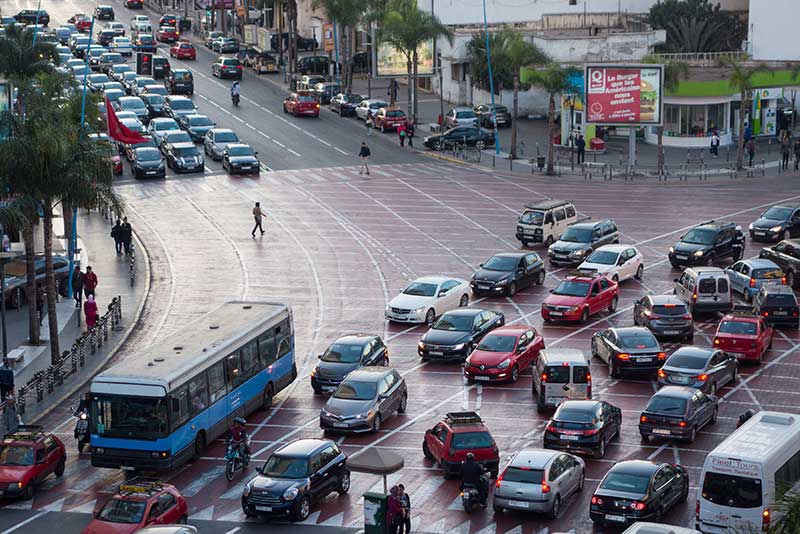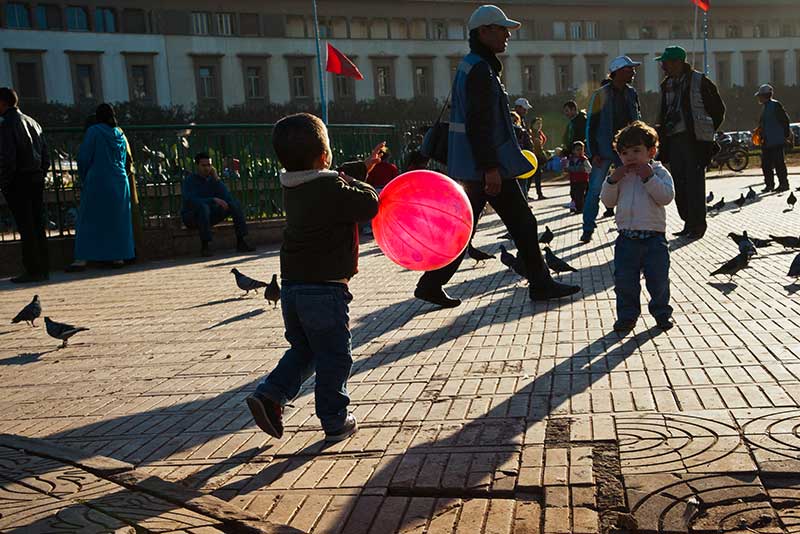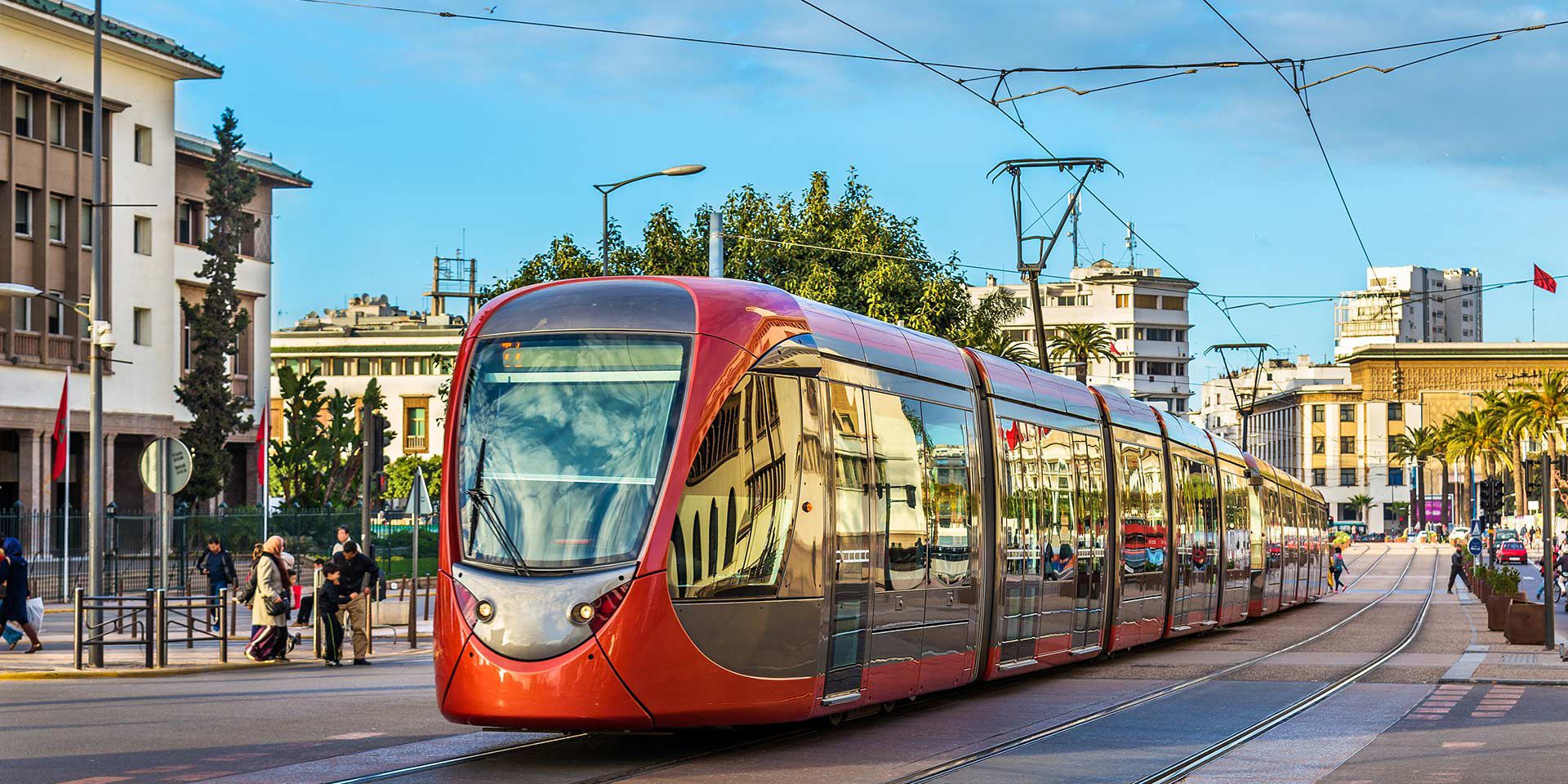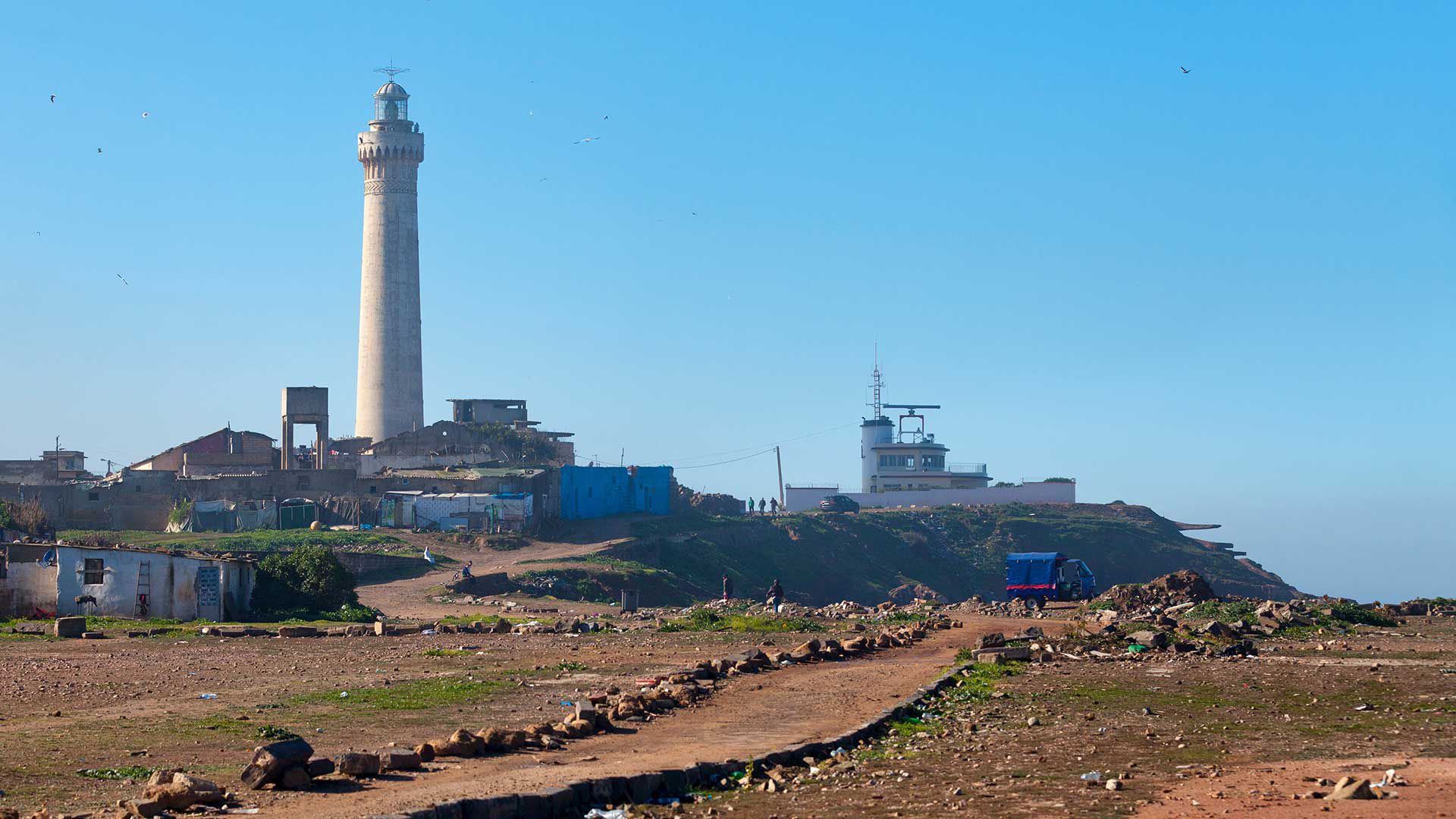By Alison Buckholtz
As brightly-colored trams swing past Casablanca’s palm trees, cross wide boulevards, and crawl through urban neighborhoods where apartment buildings cluster tightly, the scene tells a tale of the city’s vitality and economic health.
Since 2012, the trams have made Morocco’s biggest city and financial center more manageable for residents, workers, and tourists. Their ability to traverse the metropolis—to commute, to shop, to visit iconic sights—strengthens businesses that operate locally as well as globally.
But as Casablanca’s population swells with an influx of people from rural parts of Morocco, transportation systems are straining to keep pace with urbanization—and that could put the brakes on growth.
The ever-more-crowded trams “often create delays for many people like me,” said Nadia Hajli, a 51-year-old travel agent who is a long-time rider. Because of the number of people riding, as well as other recent changes to the lines, her typical commute to work takes about 20 minutes longer than before. Worries about being late to work now dominate her morning. Though she used to spend her tram ride reading, now "I more often spend my time thinking of the connection, wondering if the tram would be too crowded or not, if I can make it on time.”

Expanding the region’s new tram lines is especially important because of urban areas’ fast-expanding population. Photo: Shutterstock
Enlarging the trams’ capacity and reach is key to Casablanca’s continued growth, according to Mustapha Bakkoury, President of the Regional Council of Casablanca-Settat, one of the country’s 12 administrative regions.
“Casablanca is the economic heart of Morocco,” he says. “Expanding public transit as well as the local road network will connect people to jobs and services, reduce regional disparities, and improve the quality of people’s lives for decades to come.”
It’s not as simple as hooking another couple of cars to the end of a tram. In fact, the process of ensuring regional growth started far from the transportation hubs, in municipal buildings where Moroccan officials have been working with IFC since 2018 to create a foundation of reforms and favorable investment conditions that will expand the entire tram system as well as the region’s rural road network, and potentially other infrastructure networks. This long-term engagement to cultivate investment is the defining characteristic of IFC’s focus on “Upstream” work, which brings private sector solutions and investment to address the world’s biggest development challenges.
The changes have the potential to serve Casablanca’s long-term transportation needs, bettering the lives of hundreds of thousands of people while improving the landscape with public lighting and safety measures.
The expansion paves the way for benefits that aren’t quite as visible, though they may prove even more valuable to the region in the long run because of an innovative approach to financing. For the first time in this region, IFC has invested $100 million in long-term financing directly to a regional government—the Casablanca-Settat region. In contrast to the way such transactions are usually done, the loan does not involve a sovereign guarantee from the national government. That’s a green light to the global investment community that Morocco’s subnational market is ready for commercial investment.
Creating Conditions for Change
From the start, Casablanca’s multi-pronged tram and roads project, studded with milestone moments, was far from a sure thing. It required conceptualizing and then designing a project that would meet IFC’s standards and attract private investment years down the road.
“It’s been a long journey,” says Marco Sorge, the IFC Principal Investment Officer who has been leading the IFC team since the initial engagement with the Casablanca-Settat region in late 2018. “It was the first time we worked with Morocco’s government regions. We had to familiarize ourselves with a new type of client for IFC and turn the idea into a bankable project.”
The initiatives in Morocco are unique because of the way regions can operate autonomously. Morocco’s 2011 Constitution recognized the role of local governments as the key interface between the state and its citizens. The 2015 Organic Law on Regions confirms the regions’ important role in local administration and service delivery. That decentralization, along with a “visionary” regional president, opened the door to new ideas that will attract investors to the region, says Sorge. “This project has created a market for non-sovereign, subnational financing in Morocco, and it has the potential to change the way people think about putting their money here.”
IFC’s financing was accompanied by an advisory program aligned with IFC’s Cities Initiative, funded by the Government of Japan. Guidance included technical expertise on road construction and maintenance, as well as collaborations to assure that IFC’s environmental and social governance requirements were met. To encourage mobility, IFC is helping to strengthen safety measures across the region with energy efficient public lighting.

The process of ensuring regional growth includes improvements to the landscape such as public lighting and safety measures. Photo: Arne Hoel/World Bank
Long-term Vision
The roots of this ambitious project reach back to programs from the Government of Morocco and the World Bank to strengthen local development. But moving forward with these initiatives was slow. With almost no history of commercial infrastructure funding and only one public institution that lent to local governments, municipalities started to search for new sources of investment.
After analysis, collaboration with the World Bank, and ministers’ approval, IFC began the process of piloting a new model to finance subnational governments without a sovereign guarantee. As collaboration with the World Bank continued, the World Bank created and launched a project to help subnational governments across Morocco improve their financial management processes. The goal was to improve their transparency and enhance their ability to attract funding on commercial terms.
The subnational lending program is now under discussion in other areas of Morocco.
“Before our engagement, no commercial banks felt comfortable to lend to subnational governments in Morocco, but now they are interested,” says Sorge. “This opens the market.”
Join the conversation: #IFCmarkets
Published in December 2020
Shobhna Decloitre contributed reporting to this story.

